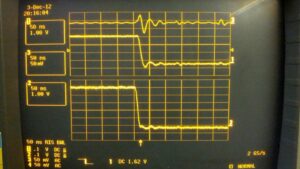In the intricate world of electronics, VCC is a term that’s often thrown around. But what exactly does it mean? For those who’ve been left scratching their heads, this article will shed light on the mystery.
VCC is a key component that’s integral to the functioning of a wide array of electronic devices. It’s the lifeblood that powers and drives the circuits in these gadgets. But there’s much more to it than just that.
What is VCC in Electronics

Digging deeper into VCC, let’s unravel its basics and understand how it functions in a circuit. VCC is an acronym that stands for “Voltage at the Common Collector”. It’s a key concept in electronics, specifically in digital logic circuits and microcontrollers. Generally, it refers to the supply voltage or power provided to operate those circuits. This voltage is typically supplied by a power supply unit or a battery depending on the electronic system and is instrumental in determining the overall performance of an integrated circuit.
When we delve into the functioning of VCC in a circuit, it’s noteworthy to mention that it is often posited at the top of a circuit diagram and connected via a line to the components embedded within the circuit. If we imagine a practical scenario of a microcontroller, the VCC pin denotes where the positive supply voltage should be connected. Meanwhile, the ground (also denoted as ‘GND’) forms the other half of the power connection and represents the 0-volt level.
But what happens if the VCC supplied exceeds the specified limit? The consequences could be drastic. Over-voltage can lead to the burning of the chip or degraded performance over time. Similarly, a voltage too low could impair the functioning or make the circuit behave erratically. Hence careful management of VCC is crucial. Many digital systems employ voltage regulators, which help maintain the voltage at a steady level, safeguarding the system from the inherent risks of over or under-voltage.

To sum it up, VCC indicates the supply voltage in an electronic circuit. It’s more than just a technical term, it’s a crucial part of circuit design and operation. Understanding VCC’s exact role in powering electronic components, and the steps taken to maintain this voltage at optimum levels, is essential in the effective creation and maintenance of electronic devices.
Key Components That Use VCC
Transistors take center stage among components that utilize VCC. Often, they employ VCC in amplification circuits, where it provides the much-needed voltage. For instance, NPN transistors utilize VCC to enhance the electron flow from the collector to the emitter. On the transistor, you often find VCC connected to the collector terminal.
Additionally, integrated circuits enjoy the support of VCC. Being a power-supply line, VCC’s role lies in enabling these circuits to perform effectively. Whether it’s 3.3V or 5V, the VCC designates the maximum voltage level that these circuits can handle.

Furthermore, logic gates in digital electronics–such as AND, OR, and NOT gates–rely on VCC. It powers the gates to facilitate the complex computations essential in computing devices.
In essence, these components highlight the extensive reach and fundamental role VCC plays in numerous electronics, facilitating their optimal operation.
Comparing VCC, VEE, and GND
It’s clear that VCC plays a pivotal role in powering electronic devices and driving their circuits. It’s the lifeline for components like transistors, integrated circuits, and logic gates, ensuring they perform at their best. But it’s not the only voltage source in a circuit. There’s also VEE and GND. VEE, or negative voltage, is often used in operational amplifiers, while GND, or ground, is the reference point for all voltage sources in a circuit. Each has its own role and importance. So, while VCC is vital, it’s just one part of a bigger picture in electronics. It’s the understanding of how these elements interact that truly unlocks the magic of electronics.

